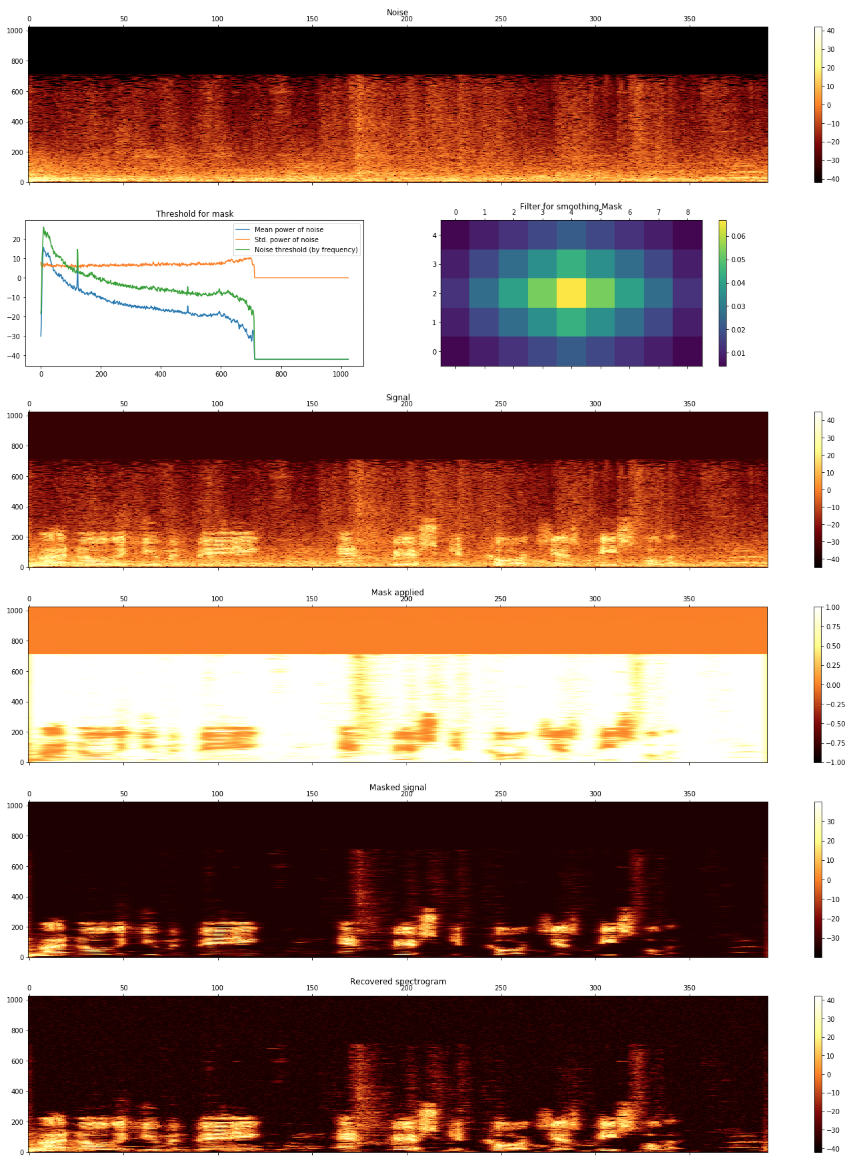- This algorithm is based (but not completely reproducing) on the one outlined by Audacity for the noise reduction effect (Link to C++ code)
- The algorithm requires two inputs:
- A noise audio clip comtaining prototypical noise of the audio clip
- A signal audio clip containing the signal and the noise intended to be removed
- An FFT is calculated over the noise audio clip
- Statistics are calculated over FFT of the the noise (in frequency)
- A threshold is calculated based upon the statistics of the noise (and the desired sensitivity of the algorithm)
- An FFT is calculated over the signal
- A mask is determined by comparing the signal FFT to the threshold
- The mask is smoothed with a filter over frequency and time
- The mask is appled to the FFT of the signal, and is inverted
pip install noisereduce
(see notebooks)
import noisereduce as nr
# load data
rate, data = wavfile.read("mywav.wav")
# select section of data that is noise
noisy_part = data[10000:15000]
# perform noise reduction
reduced_noise = nr.reduce_noise(audio_clip=data, noise_clip=noisy_part, verbose=True)
n_grad_freq (int): how many frequency channels to smooth over with the mask.
n_grad_time (int): how many time channels to smooth over with the mask.
n_fft (int): number audio of frames between STFT columns.
win_length (int): Each frame of audio is windowed by `window()`. The window will be of length `win_length` and then padded with zeros to match `n_fft`..
hop_length (int):number audio of frames between STFT columns.
n_std_thresh (int): how many standard deviations louder than the mean dB of the noise (at each frequency level) to be considered signal
prop_decrease (float): To what extent should you decrease noise (1 = all, 0 = none)
verbose (bool): Whether to plot the steps of the algorithm
Project based on the cookiecutter data science project template. #cookiecutterdatascience
